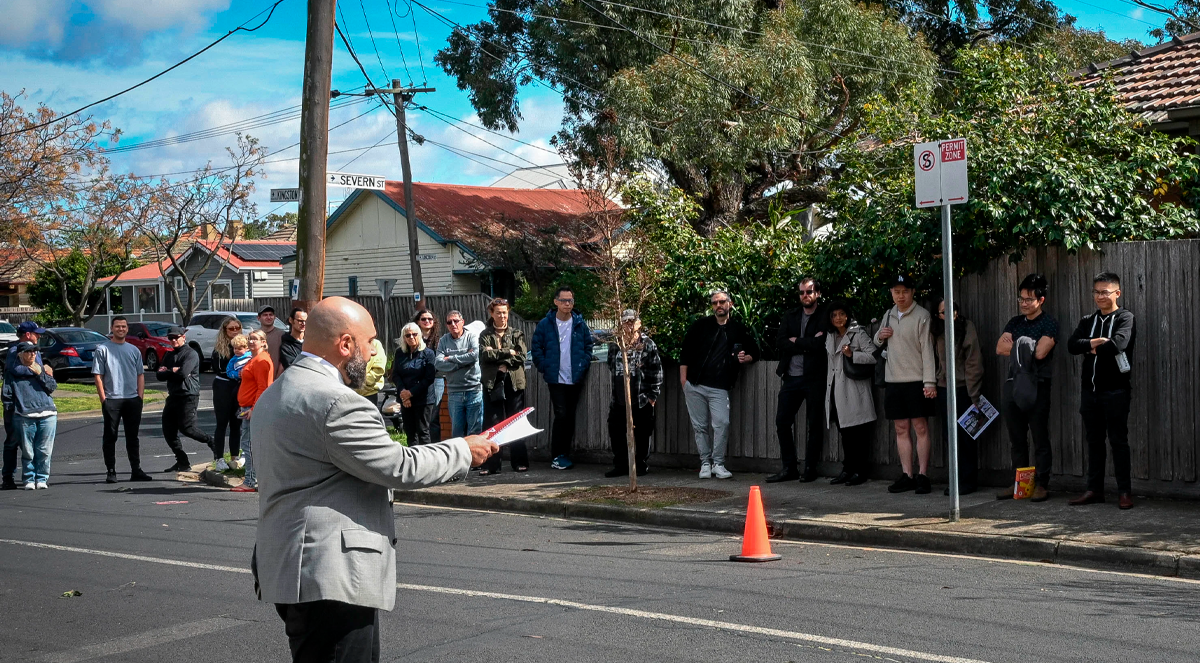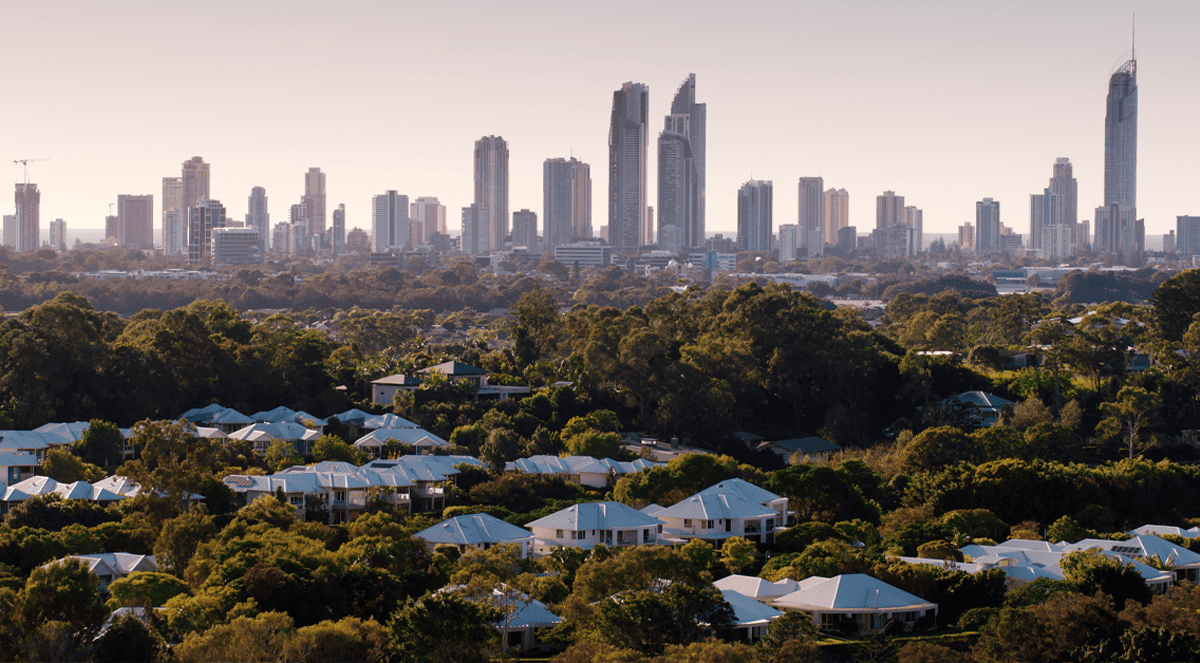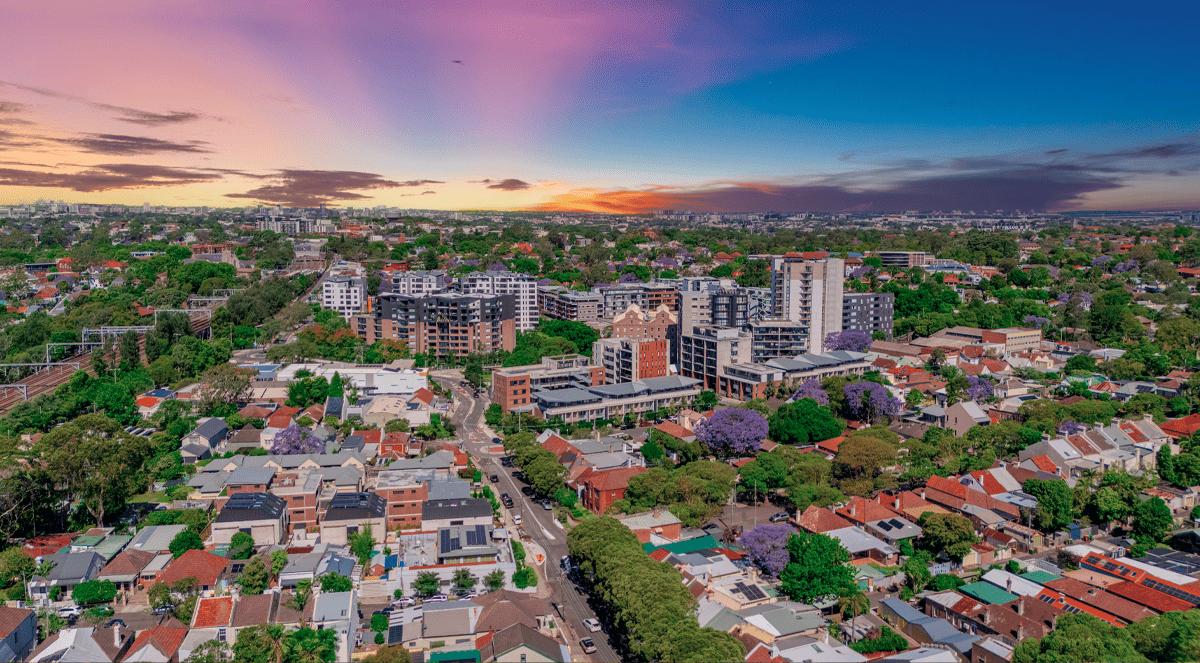Features > Property News & Insights > Market updates
First-home buyer surge as deposit scheme fuels housing frenzy

Image by Eddie Jim
KEY POINTS
- The expanded First Home Guarantee (FHG) Scheme, with no income or place caps and higher price thresholds, drove a near 50% jump in October purchases - about 1 in 10 sales nationally
- The government claims it helps buyers without materially lifting prices, but critics, including the Opposition and some economists, warn it risks overheating demand amid tight supply
- Cotality reports prices up 1.1% in October, with under-cap homes rising faster; analysts are divided on the scheme’s role, citing rate cuts and supply constraints as key drivers
Australia’s housing market has surged into overdrive following the Federal government’s expansion of its First Home Guarantee scheme, with one in ten properties sold in October 2025 purchased by buyers using the program.
The dramatic increase in first-home buyer activity came during the first month that the government’s “turbocharged” version of the 5% deposit scheme came into effect, opening eligibility to all income levels, removing caps on the number of places available and increasing price thresholds for properties eligible to be purchased under the scheme.
The details
New Federal government figures show that 5,778 homes were purchased using the guarantee in October 2025, compared with 3,901 a year earlier, an almost 50% jump.
In total, about one in every ten homes sold nationally during the month was bought through the scheme.
Housing Minister Clare O’Neil says the surge demonstrates that the policy is “working” as intended.
“What these numbers tell us is that this program is working — it’s making a big difference to the people who need our help, but only bringing a moderate number of new buyers into the market in this first month,” she says.
“That tells us it’s not having a significant impact on house prices.”
Under the scheme, eligible first-home buyers can purchase with as little as a 5% deposit instead of the standard 20%.
They avoid paying Lenders’ Mortgage Insurance (LMI) because the remaining 15% is guaranteed by the Commonwealth.
Some applicants, such as eligible single parents, can buy with deposits as low as 2%.
The government forecasts that about 70,000 buyers will access the expanded program in its first year.
Political tension
While the Albanese government insists the policy is providing a leg-up for would-be homeowners without materially driving prices higher, critics warn it risks inflating an already overheated market.
Opposition housing spokesman Andrew Bragg accused Labor of fuelling demand in the middle of a housing supply crisis.
“Labor have created this uncapped, non-means-tested 5% deposit scheme, and that is really hurting entry-level first-home owners, and so the prices have gone up,” Senator Bragg says.
He’s demanding the Treasury release all modelling behind the policy’s expansion.
The Coalition claims the 1.1% jump in national home prices in October is clear evidence that the scheme is overheating the market.
Housing Minister O’Neil disputes that, citing Treasury estimates that the expanded scheme would lift home prices by only 0.6% over six years.
She calls this a “dwarfed” effect when compared with the influence of broader forces such as interest-rate movements, wages, and a shortage of housing supply.
“They all have a profoundly more important impact than the expansion of this important first-home buyers scheme,” she says.
Demand surges as FOMO returns
Independent data also confirms that first-home buyer interest has soared.
Australia’s largest mortgage aggregator, Loan Market Group, reported a 39% surge in applications for the FHG scheme since its expansion on 1st October, pushing first-home buyer spending to levels not seen in years.
Queensland led the rush, with a 55% jump in weekly applications.
South Australia followed with a 45% rise, while New South Wales and Victoria, where first-home buyer activity had been subdued for years, both saw increases of around 34%.
Loan Market broker Max White told realestate.com.au that demand spiked immediately after the government announced it would fast-track the changes.
“As soon as news came out that the changes to the scheme would be introduced in October rather than next year, first-home buyers reached out to get pre-approved with lenders who participate in the scheme.”
Mr White says the take-up revealed the scale of pent-up demand from would-be buyers struggling to keep up with rising prices.
Real-estate agents across major cities report a return of buyer “FOMO” — fear of missing out — reminiscent of the pandemic-era property boom.
Sydney agent Angus Gorrie of Ray White Eastern Beaches says buyers were scrambling to enter the market before prices rose further.
“Everyone is terrified of how much the scheme will increase prices around them and they want to get in before it happens,” he told Sydney’s Daily Telegraph newspaper.
Analysts split
Some analysts warn the government-backed scheme could encourage risky borrowing, while others say the impact of the expanded FHG on rising home prices is not clear-cut.
AMP’s Chief Economist Shane Oliver calls the policy “ridiculous”, saying it may provide short-term benefits for a few buyers while ultimately pushing prices higher for everyone else.
“If you get in first … then fantastic, you get an advantage,” he says.
“But (for) everybody else down the queue, the price just goes up by the same amount.”
He also says participants would end up taking on much larger debts, borrowing up to 95% of a property’s value.
Analysis from housing data analytics firm Cotality suggests the expanded scheme may be influencing prices, but only in specific segments of the market.
Cotality’s Head of Research, Eliza Owen, says it’s clear that unusually strong home value increases in October coincided with the scheme’s rollout.
“National home values rose 1.1% in October, the fastest monthly pace of growth since May 2023,” she says.
While price growth was already accelerating due to rate cuts and seasonal trends, Ms Owen found that properties below the new price caps of the scheme rose 1.2%, compared with 1.0% for those above the caps.
“Properties with an estimated value below the new caps did outperform in October, but this has been the case for some time,” she says, noting that affordability pressures had already been pushing higher-income buyers toward lower-priced properties.
In Sydney, markets such as the Northern Beaches, North Sydney and Hornsby, and the Eastern Suburbs saw sharper gains for properties under the $1.5 million threshold.
In Melbourne, homes below that city’s $950,000 cap in the Inner East rose 1.7%, far outpacing higher-end properties.
Still, Cotality’s Eliza Owen cautions against attributing all the upward price momentum to the government’s expanded FHG scheme.
“Historic growth trends suggest this was happening in recent months before the expansion of the 5% deposit scheme,” she says.
“A causal relationship is difficult to establish … and it might be too soon for the full impact of the expanded scheme to show up in price growth.”
Stay Up to Date
with the Latest Australian Property News, Insights & Education.




.png?width=292&height=292&name=Copy%20Link%20(1).png)
 SIGN UP FOR FREE NEWSLETTER
SIGN UP FOR FREE NEWSLETTER





.jpg?width=1920&height=1080&name=Warning%2c%20You%20Might%20Be%20Facing%20Higher%20Taxes%20Soon%20(1).jpg)





.png?width=1920&height=1080&name=Rate%20Drops%20Signal%20BIGGEST%20Property%20Boom%20in%20DECADES%20(1).png)

.jpg?width=1920&height=1080&name=Labor%20vs%20Liberal%20These%20Housing%20Policies%20Could%20Change%20the%20Property%20Market%20Forever%20(1).jpg)
.jpg?width=1920&height=1080&name=QLD%20Slashes%20Stamp%20Duty%20Big%20News%20for%20Investors%20%26%20Home%20Buyers%20(1).jpg)
.jpg?width=1920&height=1080&name=Trump%20Just%20Slapped%20Tariffs%20%E2%80%93%20Here%E2%80%99s%20What%20It%20Means%20for%20Australia%20(1).jpg)
.jpg?width=1920&height=1080&name=Federal%20Budget%202025%20More%20Debt%2c%20No%20Housing%20%E2%80%93%20Here%E2%80%99s%20What%20You%20Need%20to%20Know%20(1).jpg)
.jpg?width=1920&height=1080&name=Australias%20Housing%20Crisis%20is%20about%20to%20get%20MUCH%20Worse%20(New%20Data%20Warns).jpg)
%20(1).jpg?width=1920&height=1080&name=Australias%20RENTAL%20CRISIS%20Hits%20ROCK%20BOTTOM!%20(2025%20Update)%20(1).jpg)
%20(1).png?width=1920&height=1080&name=Is%20Adelaide%20Still%20a%20Good%20Property%20Investment%20(2025%20UPDATE)%20(1).png)
.jpg?width=1920&height=1080&name=RBA%20Shocks%20with%20Rate%20Cuts!%20What%E2%80%99s%20Next%20for%20Property%20Investors%20(1).jpg)
%20(1).jpg?width=1920&height=1080&name=I%20Predict%20The%20Feb%20Rate%20Cut%20(My%20Price%20Growth%20Prediction)%20(1).jpg)
.png?width=1920&height=1080&name=Why%20Property%20Prices%20Will%20Rise%20in%202025%20Market%20Predictions%20(1).png)
.jpg?width=1920&height=1080&name=Why%20Investors%20Are%20Choosing%20Apartments%20Over%20Houses%202%20(1).jpg)
.jpg?width=1920&height=1080&name=Why%20Rate%20Cuts%20Will%20Trigger%20A%20Property%20Boom%20(1).jpg)
.jpg?width=1920&height=1080&name=Retire%20On%202Million%20With%20One%20Property%20(Using%20SMSF).jpg)
.jpg?width=1920&height=1080&name=4%20Reasons%20Why%20You%20Should%20Invest%20in%20Melbourne%20Now%20(1).jpg)
%20(1).jpg?width=1920&height=1080&name=Old%20Property%20vs%20New%20Property%20(Facts%20and%20Figures%20Revealed)%20(1).jpg)
%20(1).jpg?width=1920&height=1080&name=Will%20The%20New%20QLD%20Govt%20Create%20a%20Property%20Boom%20or%20Bust%20(My%20Prediction)%20(1).jpg)
%20Scott%20Kuru%20(1).jpg?width=1920&height=1080&name=Inflation%20Hits%20Three-Year%20Low%20(Will%20RBA%20Cut%20Rates%20Soon)%20Scott%20Kuru%20(1).jpg)
.jpg?width=1920&height=1080&name=How%20to%20Buy%20Investment%20Property%20Through%20SMSF_%20The%20Ultimate%20Guide%20(1).jpg)
.jpg?width=1920&height=1080&name=Victoria%20Slashes%20Stamp%20Duty%20Melbourne%20Set%20to%20Boom%20Scott%20Kuru%20(1).jpg)
.png?width=1571&height=861&name=Are%20Foreign%20Buyers%20Really%20Driving%20Up%20Australian%20Property%20Prices%20(1).png)
.jpg?width=1920&height=1080&name=The%20Single%20Factor%20That%20Predicts%20Property%20Growth%20Regions%20(1).jpg)
%20Scott%20Kuru%20(1).jpg?width=1920&height=1080&name=My%20Prediction%20On%20Rates%20%26%20Negative%20Gearing%20(Market%20Crash)%20Scott%20Kuru%20(1).jpg)

-1.png?width=1920&height=1080&name=Major%20Banks%20Cut%20Rates%20Will%20RBA%20Follow%20Suit%20(Sept%20Rate%20Update)-1.png)
%20Scott%20Kuru-1.png?width=1920&height=1080&name=Rate%20Cut%20Coming%20What%20New%20Zealands%20Move%20Means%20for%20Australia%20(Sept%20Prediction)%20Scott%20Kuru-1.png)
%20(1).jpg?width=1920&height=1080&name=Buy%20when%20the%20interest%20rates%20are%20high!%20(Why%20you%20must%20buy%20now!)%20(1).jpg)
.jpg?width=1920&height=1080&name=Carms_Revised%20Taxes%20Due%20Aug%209%20YT%20Thumbnail02%20(1).jpg)
.jpg?width=1920&height=1080&name=Carms_Too%20Little%20Too%20Late%20Aug%207%20YT%20Thumbnail01%20(1).jpg)









.jpg?width=1920&height=1080&name=Carms_Rate%20Drop%20In%20July%20Jun%2010%20YT%20Thumbnail02%20(1).jpg)
.jpg?width=1920&height=1080&name=Carms_Own%20a%20Property%20V6%20Jun%205_YT%20Thumbnail%20(1).jpg)









.png?width=1920&height=1080&name=Artboard%201%20(3).png)






.jpg?width=1920&height=1080&name=YT%20thumbnail%20%20(1).jpg)

